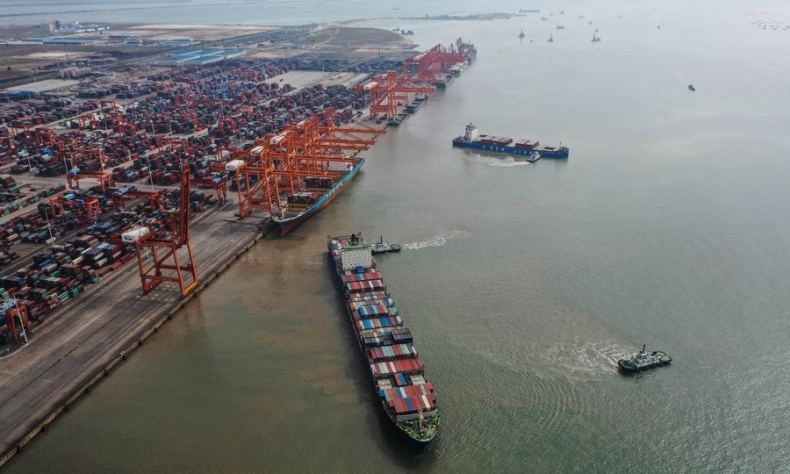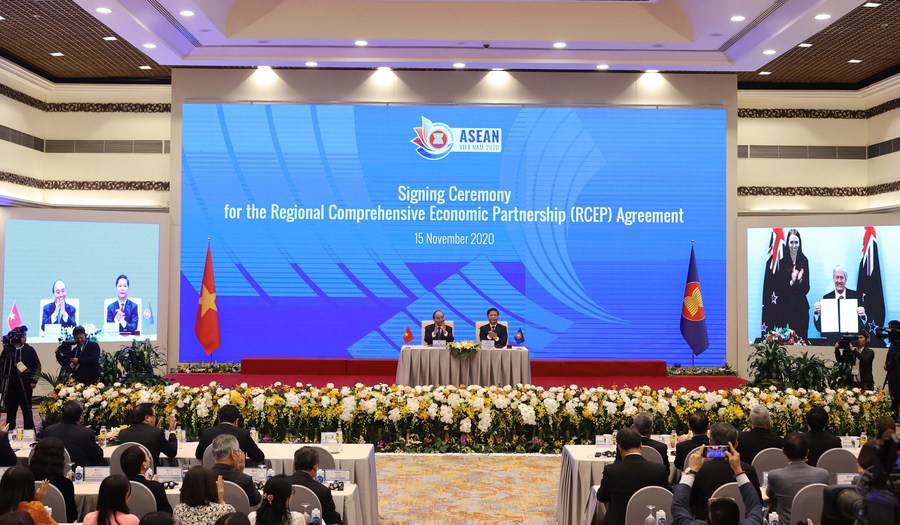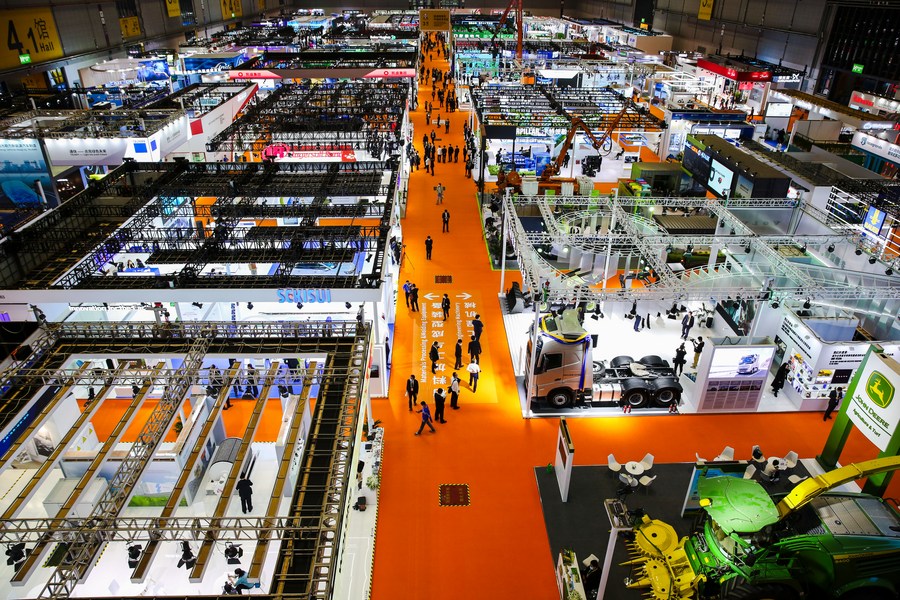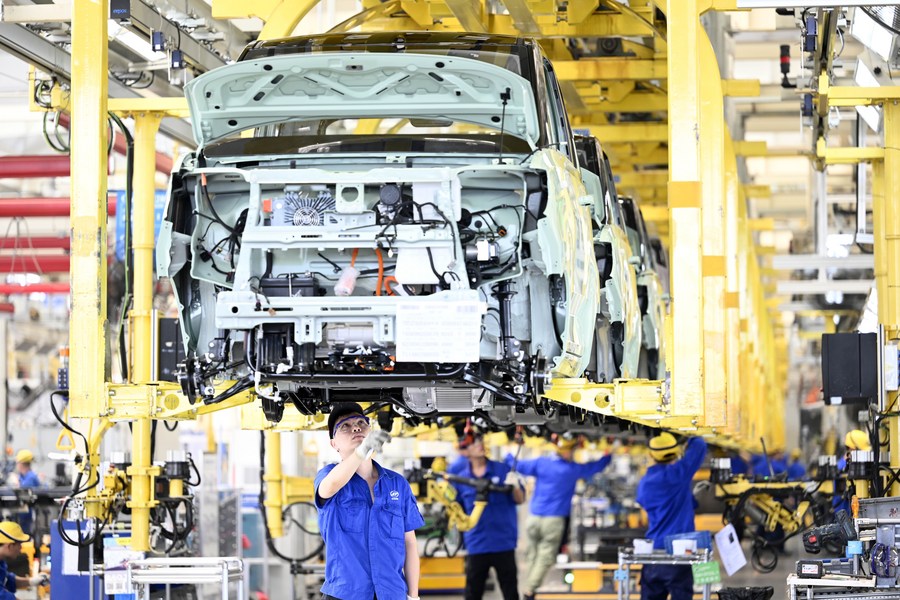China Lowers Tariffs for RCEP Nations Make Win-Win Agreement

The real winners will be China, Japan, South Korea ASEAN member states, plus Australia and New Zealand as they march together to implement the RCEP starting next year.
BEIJING: On November 15, 2020, leaders of 15 nations of the Regional Comprehensive Economic Partnership (RCEP) announced at a public Zoom conference call that they agreed to sign a major multilateral trade deal to reduce tariffs, open markets, cut back on cross-border trade & investment barriers, boost the flows of commodities, technologies, personnel and capital among its member states.
The trade pact is the largest of its kind, representing a combined population of 2.7 billion and total GDP of $26 trillion, accounting for combined exports — $519 billion annually and 30 percent of the world’s total output. The RCEP goes into the implementation stage, starting on January 1, 2022.
China’s Ministry of Commerce, also known as MOFCOM, stands eager to get a jumpstart on the agreement by disclosing its RECEP preparations on the eve of the CIIE (China International Import Expo), which was hosted in Shanghai on November 4. Beijing is signaling its efforts and ambitions to revitalize the momentum to boost globalization, pave the way for national and regional economies to rebound by raising trade and investment output, as well as to help nations in the region recover from the Covid-19 pandemic.
The current state of the global economy appears to be flat-lining with growth rates, while higher-than-expected inflation rates, serious disruptions in supply chains, and a rising number of Covid infections worldwide have created more instability in our world.
Some good news is needed to inject strong momentum for greater economic prosperity and the RCEP nations, which are China, South Korea, Japan, Australia, New Zealand and 10 member states of ASEAN (Association of Southeast Asian Nations) could become the catalyst for brighter days ahead on the horizon. MOFCOM has set the right tone by preparing to implement tariff cuts.

Setting the ‘gold standard’ on FTAs
MOFCOM said in a public statement, “(The deal will send) strong signals against unilateralism and trade protectionism, support free trade and safeguard the multilateral trading system,” according to the Bangkok Post. Beijing also stands prepared to fulfill all of its 701 binding obligations from the RCEP, not only tariff reductions but changing the rules on the origins of goods among many other requirements.
MOFCOM has organized over 600 training sessions for more than 166,000 Chinese business people, trade officers, and Customs officials. Hence, products imported from RCEP nations can clear China’s Border & Customs much faster with less paperwork and bureaucratic procedures. The multinational Dole Food Company deployed delegates to attend the CIIE and the company believes the RCEP will be a game-changer for them.
Wang Na, director of Dole China, praised China’s efforts to continue with its reforms and opening while pushing ahead on successful implementation of RCEP. Wang noted that many of Dole’s rich fruits come from the tropical regions of Southeast Asia and they will benefit big-time from a zero-tariffs policy and Customs’ facilitation, which will dramatically curtail the waiting times from when the fruits get shipped from their country of origin and reaching the shops in China.
Wang makes a very important point that the RCEP can and will secure the supply chains in the Asia-Pacific region. For the moment, countries in the Americas’ (North and South Americas), as well as Europe and elsewhere are experiencing major disruptions of regular economic activities as record-breaking log jams at California’s international ports have sparked a chain reaction of more breaks in the global supply chains. As of November 10, 111 cargo ships are waiting offshore to unload deliveries at the Los Angeles and Long Beach ports.

China and Asia markets to rebound faster
The RCEP places East Asian and Oceania countries in a much stronger position. The US-based think tank, Peterson Institute for International Economics published a report forecasting the trade agreement could add $147bn annually to the region’s GNI (gross national income). As a result, the RCEP holds the potential to increase the region’s GDP by 2.1 percent and the world’s economy could rise 1.4 percent. The Nikkei Asia media group said the RCEP can boost Japan’s GDP alone by 2.7 percent, which is significant considering the slow growth of the Japanese economy in the past two decades.
RCEP has already been fully ratified by 10 nations – Brunei, Cambodia, Laos, Singapore, Thailand, Vietnam, China, Japan, New Zealand, and Australia. After the RCEP gets implemented next year, we could witness warming trade and investment ties between China and Australia. The RCEP requires the two countries to lower their trade tariffs and barriers placed against each other.
Australia is a major exporter of raw materials, such as coal, iron, ore, and other metallurgies while enjoying tremendous success with its ranching, dairy farming, and wine-making. China has the world’s largest population and before the recent rift in China-Australia bilateral relations, the two nations had good trade and investment ties. The RCEP could restore their relations back to the path of prosperity for both sides.
Members of RCEP are expected to remove tariffs on 91 percent of goods, while standardizing new rules on investments, intellectual property rights’ protections (IPR), and with the end goal to eliminate tariffs on a wide range of imports within the next 10 years.

China gets it right
China is taking a winning approach to boost the domestic, as well as Asia-Pacific regional economy. China has over 400 million people who have risen to the status of the middle class (Note: the middle-income group). They have higher incomes, while consumption and retail sales are surging in the country. Despite the higher demand, China’s shops and retailers have shelves of goods and products to sell directly to their shoppers.
There’s a different tale to be told in Western countries, where a rising number of shops have reported cases of empty shelves. The RCEP will accelerate trade flows and keep stores in China and other parts of the Asian continent to be fully-stocked in inventories and consequently, inflation rates will be moderately lower than in the west.
Chinese Vice President Wang Qishan has told the public that China will continue to improve its market conditions to attract more inbound FDI (foreign direct investments) while deepening regional and bilateral free trade agreements and economic cooperation deals. Beijing has not turned its back on the world, despite rising sentiments in favor of trade protectionism and anti-China attitudes.
The Central Government has plans to provide better access for foreign companies to enter China’s finance, transportation and tourism industries. Foreign enterprises from the RCEP member nations will be the biggest beneficiaries.
China has played a key role in the RCEP and that could improve its chances of formally entering the Japan-led Comprehensive Progressive Agreement for Trans-Pacific Partnership (CPTPP), which proposes even deeper tariffs cuts and covers more trade areas. Washington has backed away from the CPTPP, while India refused to join the RCEP after lengthy negotiations.
Nonetheless, the real winners will be China, Japan, South Korea ASEAN member states, plus Australia and New Zealand as they march together to implement the RCEP starting next year.
 Facebook
Facebook
 Twitter
Twitter
 Linkedin
Linkedin
 Google +
Google +



